ADHD and Addiction
1/13/2009
- Read more about ADHD and Addiction
- Log in or register to post comments
1/13/2009
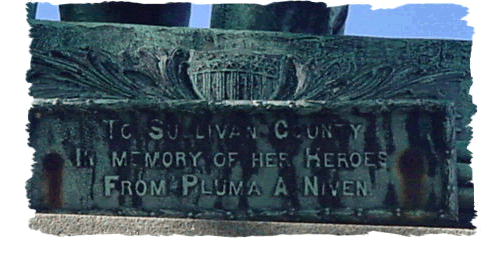
I became curious a while back upon discovering that the back of the base of the Soldier and Sailor Monument on the lawn of the Lawrence H. Cooke Sullivan County Court House (under the soldier's feet) an inscription says, "To Sullivan County in memory of her Heroes from Pluma A. Niven".
THE HIDDEN WOMAN MYSTERY ENDURES
By John Conway
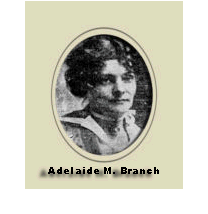
July 25, 2008 - It has often been said, and written on occasion in this column, that few stories in Sullivan County’s history are as fascinating as that of the hidden woman of Monticello. Perhaps no one has been as fascinated by the saga as Tom Rue.
Rue, who has for years accumulated historical tidbits on his website, including a tantalizing quiz about local history that is currently running, and who was recently appointed the official historian for the Sullivan Masonic District, is a dogged researcher who has managed to put together more information on Melvin H. Couch and Adelaide Branch-- the key characters in Monticello’s hidden woman saga-- than anyone ever has, and intends to eventually publish a booklet about the affair.
Rue’s extensive research has helped to clarify the role that best-selling author Upton Sinclair played in Miss Branch’s life following the death of Couch just before Christmas in 1913, when her fifteen year long affair with the former district attorney became public and changed her life forever.
It has long been known that Sinclair had taken an interest in the matter, or more specifically in Miss Branch herself, and some newspapers– the tabloids of the day had a field day with the story– even went so far as to report that he had played a role in her being secreted away from the Sullivan County jail in the dead of night.
Newly discovered information debunks that story, as Sinclair himself wrote that while both he and his wife had contacted Miss Branch with offers of assistance, she never acknowledged their overtures until after she had departed Sullivan County.
"On Sunday morning, while I was away from home, my wife was called up on the phone by Miss Branch, who announced that she had left the Sullivan County Jail and was now at the ferry in New York, with no idea what to do next," Sinclair wrote in an undated manuscript he entitled "The Hidden Woman of Monticello: A Study in Yellow Journalism." "My wife invited her to our home and sent word to me what she had done."
Sinclair goes on to write about his experiences trying to sell Miss Branch’s story to the tabloids– especially William Randolph Hearst’s Evening Journal– and the complete lack of ethics those tabloids employed in an attempt to avoid paying for the information.
He also writes that while the New York City dailies reported that Miss Branch had headed west to live with her brother, or that she had been admitted to a "sanitarium within ten miles of Monticello," none of them had the facts straight. Sinclair, however, never actually wrote where Miss Branch ended up. Rue now thinks he has an idea.
"One interesting detail that I discovered, which I have not seen published anywhere, concerns Adelaide Branch's presence in Bermuda less than a year after the events in Monticello," Rue discloses. "This is especially interesting in light of the fact that the Sinclairs reportedly left for Bermuda within days of her arrival at their residence in Manhattan, after she left the Sullivan County Jail. The public story, given by Upton Sinclair and his doctor friend on Long Island, is that Adelaide went to a sanitarium. However, I haven't been able to confirm this. Given Sinclair's well-founded cynicism about intrusions by the press, as well as Adelaide's strong desire for privacy, it seems possible the sanitarium story was fabricated for her benefit."
Indeed, Rue says he has discovered a mortgage document signed by Miss Branch while she was on Bermuda, and attested to by an official there. He has also discovered references to Miss Branch spending time in the country with the Sinclairs, indicating that their involvement with the mystery woman did not end with the newspaper world’s fascination with the story.
While Rue is the first to admit that his research doesn’t answer all the questions that have arisen about Miss Branch’s later life– for instance, when and where did she die– but it has shed much new light on a most fascinating tale. Through it all, he has developed a theory about why a woman who was by all accounts bright and well-read, attractive and well-bred, would confine herself to a six by ten-foot room for three years, seldom venturing outside.
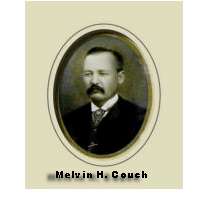
"My impression of Adelaide Branch, based on descriptions by Sinclair, Dorothy Dix, and others, is that she was a very bright woman, non-traditional in many of her social attitudes, and probably suffered from Major Depression and PTSD," Rue says. "Her father hung himself and her mother died of cancer, both when she was a teenager. These losses undoubtedly impacted her greatly, and perhaps contributed to agoraphobic traits which sometimes accompany depression."
Whatever her motivation, the fact remains that Adelaide Branch willingly led a secret life for at least three years, serving as devoted mistress to the eccentric lawyer Couch, living in a partitioned room in his office, with little regard for her own well being. Her story was fodder for tabloids across the country until they found something newer and equally fascinating to write about, and no one has ever been quite sure what became of the woman who was alternately referred to as a love slave and a heart wife, a victim and a vixen.
Tom Rue hopes that his new booklet, when finally complete, will clear up a lot of the mystery, and bring to light once and for all, the true account of The Hidden Woman of Monticello.
John Conway is the Sullivan County Historian. He lives in Barryville and can be reached at jconway52@hotmail.com.
This column by Sullivan County Historian John Conway appears in today's edition (July 25, 2008) of The Sullivan County Democrat. This is the second of a two-part series in Sullivan Retrospect on the subject, the first of which appeared last week. I e-mailed Mr. Conway after reading last week's column. He incorporated information that I sent him into his follow-up piece. Mr.
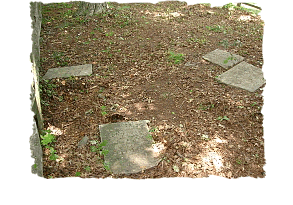 MONTICELLO – A forgotten graveyard has gotten a long-overdue cleanup. The Litts cemetery, on the boundary of Sleepy Hollow Apartments and Monticello High School, is the resting place of the remains of some of the area’s first European pioneers.
MONTICELLO – A forgotten graveyard has gotten a long-overdue cleanup. The Litts cemetery, on the boundary of Sleepy Hollow Apartments and Monticello High School, is the resting place of the remains of some of the area’s first European pioneers.
The stone of Daniel Litts lies flat on the ground, barely legible. He was christened 7 January 1772 in Shawangunk. Another stone memorializes Metje (Martha) Masten Litz of Wawarsing. They married 5 October 1795. She was christened 7 April 1776 in Shawangunk, making her 82 at her death. Their children were: Lea Litz, christened 26 January 1796; Johannis Litz, christened 6 August 1798, both in Wawarsing; and Isaac Litz, christened 11 February 1815 in Wurtsboro.
The ancestors of the Litz family were Huguenots, said Tom Rue, historian for the Sullivan Masonic District, who posted an article on the web at the end of March calling on Monticello village officials to take action to save the cemetery from destruction. Rue’s headline asked, “Who cares about an old cemetery?”
The village never responded. Rue said Thompson highway superintendent Rich Benjamin e-mailed a pledge to assist. By mid-July, trees and brush were cleared, laying bare several headstones. Mr. Benjamin said he plans further action later this summer, carefully laying each stone in a bed of sand.
Rue said Doug Gurkin, a principal officer of Edgewater Associates of Spicewood, Texas, the prospective buyer for Sleepy Hollow Apartments, called him in March asking for details about the pioneers buried in the lot, promising to fully restore and maintain the graveyard once his company purchases Sleepy Hollow and other renovations are made.
More history on the Litz family and their times, and photos of the cemetery, can be found on the web at tomrue.net.
Click the link below to read more.
Download a copy of the original survey of the Newburgh and Cochecton Turnpike, Liber 18 of Deeds, pp. 325-336, filed 13 June 1807 in the Ulster County Court House at Kingston by William A. Thompson, Esq., first Judge of the Court of Common Pleas, County of Ulster, State of New York. (11 pages, 16MB, Acrobat file).
"The Breadth of Broadway" summary report to Village Attorney and short version given as public comment at the July 7th the Village of Monticello Board of Trustees meeting; relevant cases, and cover letter.
"It would be a double honor", I told newly installed District Deputy Grand Master John Wells when asked to assist him during his two-year term by serving as Historian for the Sullivan Masonic District.
He told me the last man to serve as Historian for the Sullivan District was Bert Feldman, late of Mongaup Valley. Bert published numerous articles on the subject of local history. He was also a friend and sponsored my initial application to become a Freemason in 1992.
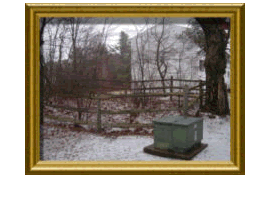
It's been said that you can tell a lot about a community by observing how they treat the elderly, children and their cemeteries.
On the northern boundary of Sleepy Hollow Apartments, adjacent to athletic fields of Monticello High School, there sits a small, abandoned cemetery. Located inside a dilapidated split rail fence are several graves, with at least two visible tombstones. One marks the final resting place of Daniel Litts. The stone has been knocked over and lies flat on the ground, its lettering is barely legible. Next to it is an unmarked block which may memorialize Danie's wife Metje (Martha), who reportedly died on November 4, 1859 in Forestburgh. Metje was christened 7 April 1776 in Shawangunk, Ulster County, making her 82 years old at the time of her death.
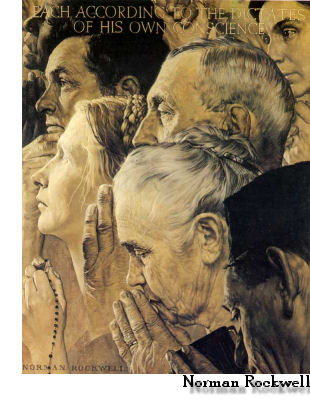
Robert Cloninger, M.D. of the School of Psychiatry at the Washington University of St.